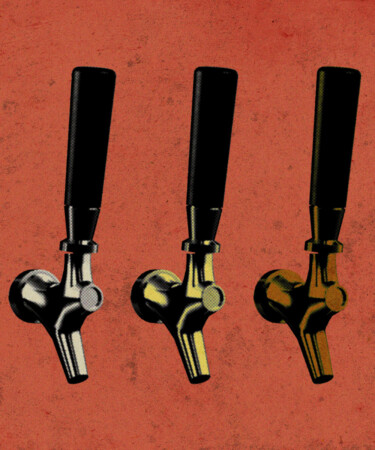One of life’s simplest pleasures is heading out to a bar on a crisp fall Saturday to enjoy a cold beer on draft. The air has a pleasant chill to it, perhaps there’s some college football on the TV, and friends and loved ones abound. But if there’s one thing that is sure to kill those good vibes, it’s getting served a brew that tastes less than ideal — especially when you know how delicious it normally is. While it might be tempting to blame the pint on a bad batch, the likely cause for your less-than-satisfying beer is the draft line it was poured from, not the draft itself.
To learn more about the importance of keeping draft lines clean — and how to know if your beer was poured from a dirty one — VinePair tapped Christopher McClellan, founder of beer consulting firm The Brew Enthusiast.
“The key phrase for great draft beer is ‘as the brewer intended.’ Bars and restaurants are delivered the perfect keg of beer, and it’s their responsibility to get that beer to their customers tasting exactly the way the brewery intended,” McClellan explains.
Considering beer is a living product containing yeast, sugar, minerals, and other organic materials, these compounds build up over time in draft lines and thus require consistent management with both caustic and acidic chemicals. According to McClellan, most draft systems must be cleaned every two weeks using a recirculating technique with a caustic solution that will corrode any buildup. Furthermore, lines should be intensively cleaned quarterly with acidic solutions to eliminate any yeast, bacteria, beer stone, and mineral buildup.
“This will keep you pouring clean, fresh, perfect beer, and it will also extend the life of your draft system and keep your customers coming back for more beer,” he says. “It should be required on a national scale, but it’s not, unfortunately.”
As there are no legal requirements in place, some bars may not have draft lines that are up to par, resulting in customers getting served musty pints. As McClellan explains, beers served from dirty draft lines typically smell and taste buttery, sour, slick, or like minerals. In extreme cases, it may even give off aromas of vomit or rotten vegetables. Appearance-wise, dirty draft systems cause beers to lose their head retention, resulting in a glassy look.
“You know when you’re served a full draft beer to the brim with no head on it?” he says. “Dead giveaway.”
If you suspect you’ve been served a beer from a bad line, do not be afraid to say something — especially with a decent pint running customers as much as $10 these days. Even if you don’t know exactly what is wrong with the beer, if it does not meet your expectations, McClellan highly recommends letting a member of the staff know.
“The bar doesn’t want you to leave or never come back,” he says. “I know nobody does it, but if we’re going to change everyone’s perspective on the importance of consistent cleaning, it starts at the most important part: where money is exchanged.”
*Image retrieved from Aliaksandr Kisel via stock.adobe.com
